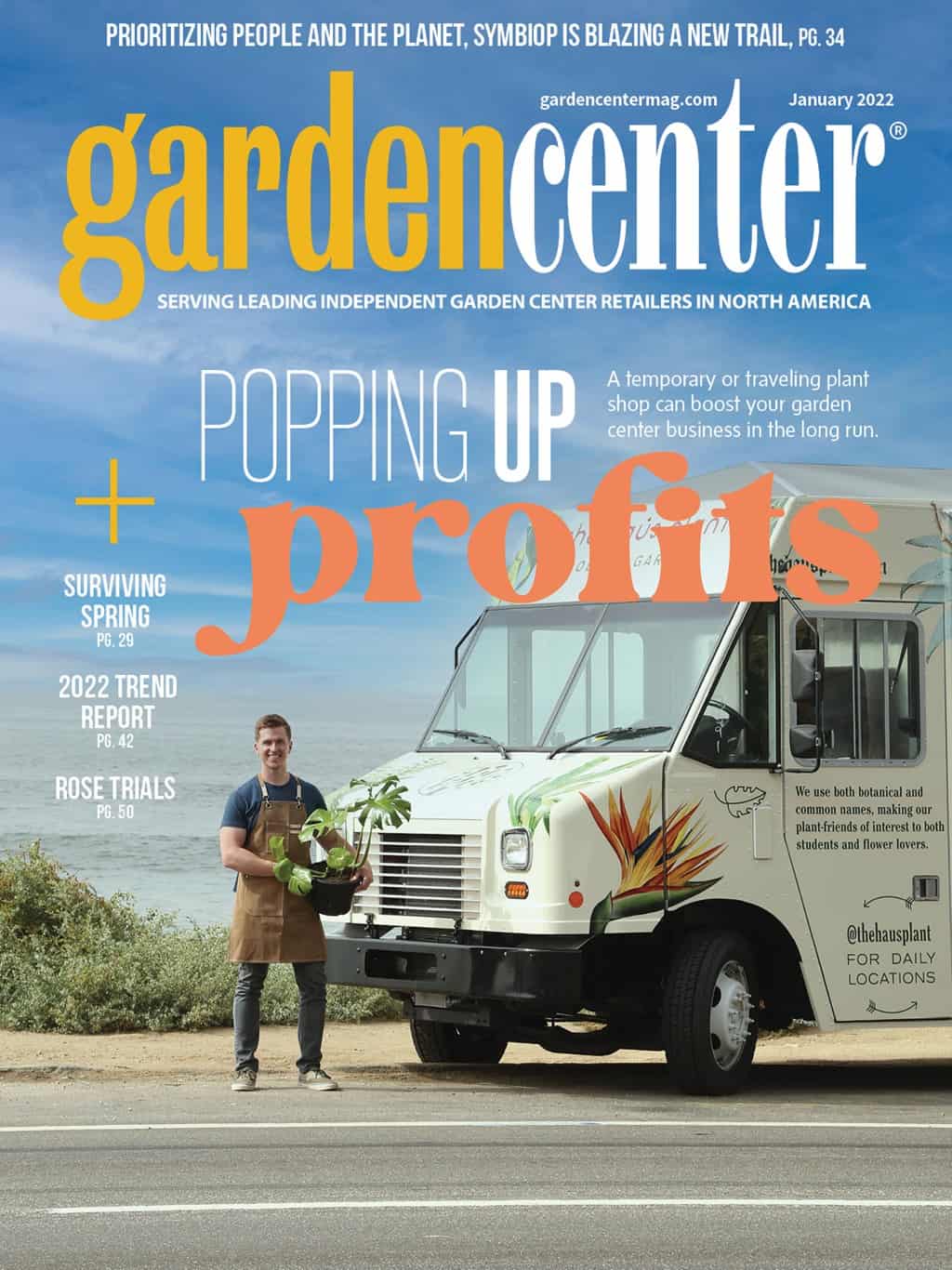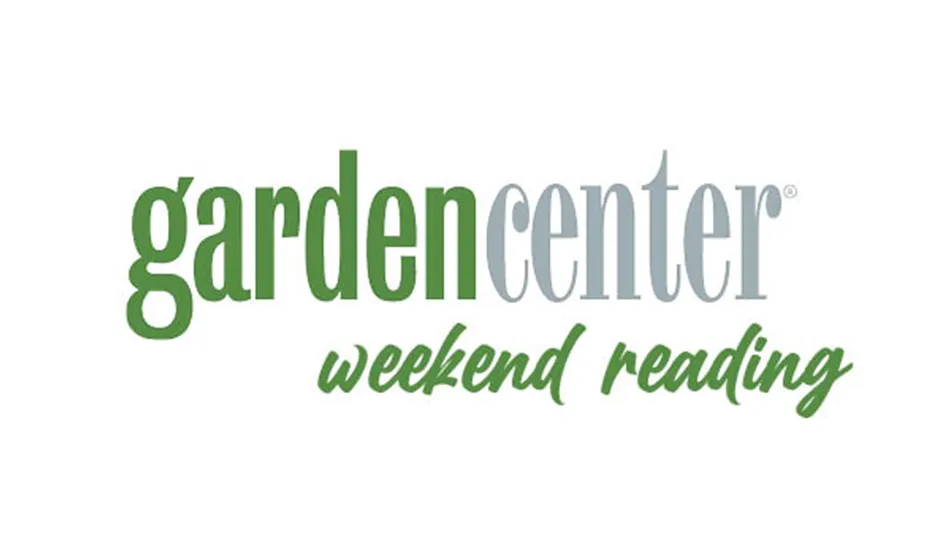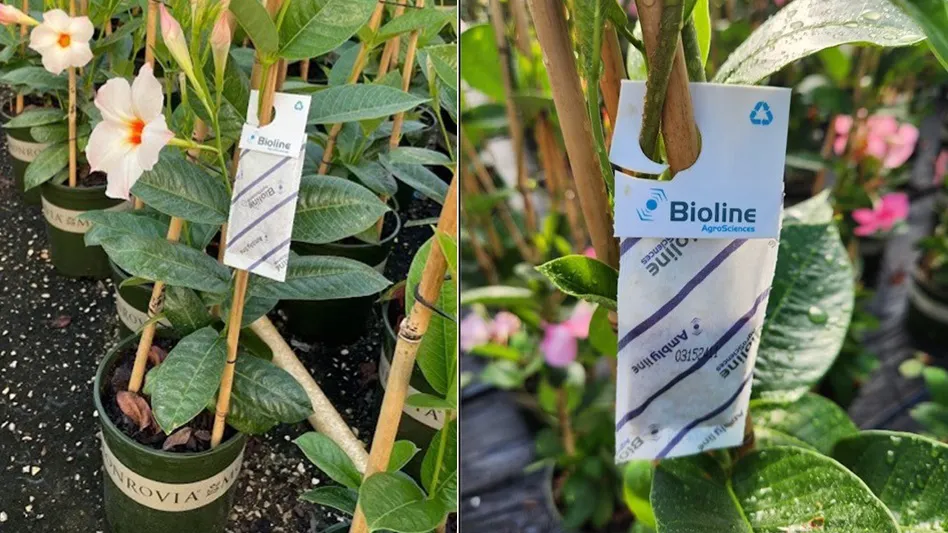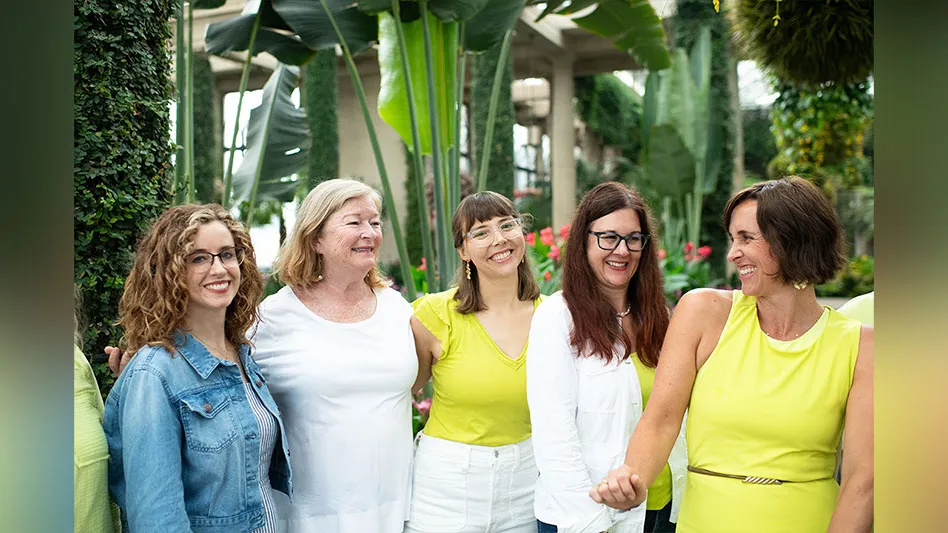

We’re in for another solid year of plant sales, and the continued pursuit of gardening is being fueled mostly by millennial purchases, according to research by Axiom, a marketing and consulting firm that serves the horticulture industry. More than half of all groups surveyed (boomers, gen Xers and millennials) said they plan to plant more in 2022 and some 30% said they will plant about the same amount as they did in 2021. When you break it down by generational demographics, almost 76% of millennials and 68% of gen Xers plan to plant more in 2022. More than half of the boomers said they’ll plant about the same, while a third of that generation said they’ll plant more. This is certainly something to celebrate. It’s also beneficial as you prepare marketing messages and start sales discussions with independent garden centers (IGCs) and landscape customers.
Motivation
The pandemic may have spurred consumers’ motives for getting into gardening in 2020 and 2021, but they have a different outlook going into 2022. When asked what is currently driving their interest, the top response focused on gardening’s ability to lower stress and create an overall sense of health and well-being. Spending more time with family outdoors and spending more time at home tied for second, while creating a beautiful outdoor space and food gardening tied for third. Interest in outdoor entertaining came in fourth, followed by fostering more wildlife in my yard and addressing global warming. Although the bottom two driving factors didn’t get a large response, it shows consumers are thinking about these issues, providing an opportunity for nurseries with niche products and messages to build that market share.
Homeowners also said they were feeling confident this season, with 84% of those surveyed saying they felt they were successful with their gardening tasks in 2021. “That’s holding steady from last year’s findings,” says Kathleen Hennessy, head of Axiom’s horticulture marketing group. “What is even more encouraging is that number jumps to more than 90% when it comes to millennials. We believe if this group feels successful, that means the industry will have long-term growth. Millennials see gardening as more than just a hobby, it’s an extension of their home and a chance to enhance outdoor living space.”
Spending
2022 will see gardeners investing more money, with some 28% indicating they will spend more money in 2022 and nearly 68% will spend the same as they did in 2021. Throughout this year, homeowners spent the most on garden plants at IGCs, followed by big-box stores.
Social media influence
During the pandemic, respondents said they turned to Facebook more often to learn about new plants, gardening supplies and outdoor living products, followed by YouTube and Instagram.
Projects
In 2021, flowers, vegetables, and houseplants rounded out the top three types of gardening, followed closely by perennials, containers, and shrubs. In terms of new projects in 2022, more than 50% of those surveyed plan to create a vegetable garden, while 39% said they plan to add new annual and perennial plants, 27% want to create plantings for pollinators and wildlife, 26% want to add new varieties of shrubs and trees, and 24% are looking to use native plants.
The current zeitgeist influences plant purchases, design trends

After the pandemic it feels like we’re getting a second chance, where the focus is on sustainability, climate solutions and decluttering. In other words, a fresh start. Because many people are now working from home, there is more emphasis on furnishing both the indoor and outdoor spaces.
Fresh Start in the interior: Fresh, tidy spaces with lots of white and occasionally pale blue and yellow accents are the hallmark of Fresh Start. Because our home now has multiple functions — like working from home, schooling, exercise, relaxation, and welcoming visitors — the interior has to be easy to transform. Room partitions and multifunctional walls are thus ideal and made of natural materials into which flowers and plants can be incorporated. Foliage plants, variegated, and air-purifying plants create a healthy indoor space and offer a fresh look, which can also be moved around easily.
Fresh Start in the outdoor space: Outdoors, this style trend is symbolized by a clear layout with lots of white accessories and white flowering plants. There is less paving, and more biodiversity. Materials in the garden are biodegradable and bio-based as much as possible. Just like indoors, the garden/patio/balcony is acquiring multiple functions, one of which is extra living space.
Fresh Start color palette: The basis for the color chart in this style trend is white, combined with various naturals. The accent colors — such as shades of green, blue, and red — recur in flowers and plants and highlight the multifunctionality of furniture. These color accents are used with restraint and are particularly used to reinforce the fresh look of the white.
For more: flowercouncil.co.uk/article/fresh-start-style-trend

Wellness Bubble
We are keeping our spirits up with joie de vivre, creativity, and humor. We’re investing energy in our mental health. Hobbies and amusement are given full rein, as is wellness. From this utopian world, we observe the world through rose-tinted glasses.
Wellness Bubble in the interior: Ideally, we would like to turn our home into a super deluxe spa resort. The combination of soft tones with transparent materials and round shapes is reminiscent of water which help us to relax. The flowers and plants have an energetic look, like the foliage of an aloe vera. Painted leaves, plumes, grasses, and dried flowers are combined with fresh cut flowers. Those are sometimes also painted, creating a color gradient, particularly in pastel shades.
Wellness Bubble in the outside space: In the garden you relax in a bath or pond amidst exotic flowers and plants. Recliners and loungers look out on an unusual mixture of exotic plants and blooming borders. A beautiful sunset provides the inspiration for the colors used. In other words, the garden provides the ultimate escape from hectic times.
Wellness Bubble color palette: The color chart consists of vivid pastels and pastel neon shades. Examples of these are shades of pink and yellow, flanked by pastel green and lilac. White is less important, and primarily provides the transparency of the overall look. The colors are often used on transparent or semi-transparent surfaces, creating a watery effect.
For more: flowercouncil.co.uk/article/wellness-bubble-style-trend

Bright and Breezy
There is a need for connection, equality, a shared reality, altruistic behavior, and inclusivity. After the stressful pandemic period we are looking for ways to bring us together and take away our worries, so that we can start enjoying life again without fretting.
Bright and Breezy in the interior: We enjoy that carefree pleasure in a cheerfully colored interior. Uncomplicated patterns with checks, stripes or pictures of fruit reinforce a festive feeling. Flowers and flowering plants bring the final touch of positive energy to this interior.
Bright and Breezy in the outdoor space: The outdoor space is also colorful and holiday-esque, where you enjoy time amidst the flowers and greenery. Think of colorful borders, colored parasols, and cheerful pick-your-own-flower gardens as a new take on the kitchen garden.
Bright and Breezy color palette: Use cheerful and powerful pastel tones such as pink, blue, mint green and pale orange, alternated with more vivid accents. Coral red plays a fresh and softening role and is important for both flowers and plants. White plays a less significant role in this color chart.
For more: flowercouncil.co.uk/article/bright-and-breezy-style-trend
Traditional Sentiment

Some people seek security in orthodox behavior, control, and traditions. They may distrust novelty. Within this tendency it is important to restore trust and to ensure that the familiar, the local, and the trusted has a place in this changing world as well.
Traditional Sentiment in the interior: Interiors within this trend are warm, rich in color, and nostalgic with a twist by mixing vintage and old. Retro and vintage style flowering plants are a hit in this trend, and so are plant collections of different cultivars within a single species. Bouquets are also subtly arranged with a lot of attention and appreciation for each individual product.
Traditional Sentiment in the outdoor space: In the garden we find refuge with plants, shrubs and trees, and cozy seating. There are unusual plants, and you find fruit and vegetables in the kitchen garden. Traditional and romantic roses, particularly climbing roses, combine harmoniously with low-growing fruit trees.
Traditional Sentiment color palette: The color palette within this style trend consists of soft faded pastel shades like nude, lilac and pink. Set against that are rich and dark colors with a reassuring feel, like claret, ochre, and olive green. This creates a surprising combination of familiar and innovative elements.
For more: flowercouncil.co.uk/article/traditional-sentiment-style-trend
Environmental influences
Protecting the environment at both the home and community level is an admirable trend that shapes plant sales and landscape designs.

The team at Tilly, an online landscape design and gardening coach firm, pinpointed three environmental trends that will likely impact plant sales.
- Stamp out invasive species. As with all industries, homeowners are starting to become extremely savvy when it comes to their yards and not only what looks good, but what is good for the environment and their surroundings. Shifting the focal point from native plants to also understand the importance and harm of invasive species will trend in 2022. Planting invasive species has become such a damaging trend that some towns are even offering to remove invasive species for free to protect the neighborhood.
- Low-water usage landscapes. With droughts, extreme heat waves and water shortages, xeriscape landscaping will continue to grow in popularity across the U.S., but specifically boom in the West and Southwest. A well-designed, low-water plan, combined with homeowner’s investing in smart irrigation systems, will greatly reduce water bills, remove the use of pesticides and fertilizers, and focus the design on native plants which are more likely to thrive in the surrounding environment. Designers have become savvy at making this pragmatic landscape look chic, sophisticated, natural and comfortable.
- Storm water mitigation. Homeowner’s will actively seek natural solutions to help eradicate drainage and flooding problems from 2021. The U.S. EPA has said that runoff is a major source of pollution in our waterways. We predict this will influence design through drainage solutions and rain gardens. Rain gardens are a depression designed to collect runoff from a roof, driveway or yard and are usually filled with shrubs or perennials – especially native plants that like wet feet. They are a natural and beautiful way to help with water runoff and can be effective in removing up to 90% of nutrients and chemicals and up to 80% of sediments from the rainwater runoff. They allow up to 30% more water to soak into the ground (Groundwater Foundation).
Read more about their trend forecast at tillydesign.com.
This story originally ran in the December 2021 issue of Nursery Management magazine.

Explore the January 2022 Issue
Check out more from this issue and find you next story to read.
Latest from Garden Center
- Weekend Reading 5/17/24
- GardenComm 2024 Annual Conference registration is open
- Landmark Plastic celebrates 40 years
- Proven Winners introduces more than 100 new varieties for 2025
- Weekend Reading 5/10/24
- The Family Business, Part 2: Agreeing (and disagreeing) on capital investments
- Registration opens for Darwin Perennials Day
- Weekend Reading 5/3/24





